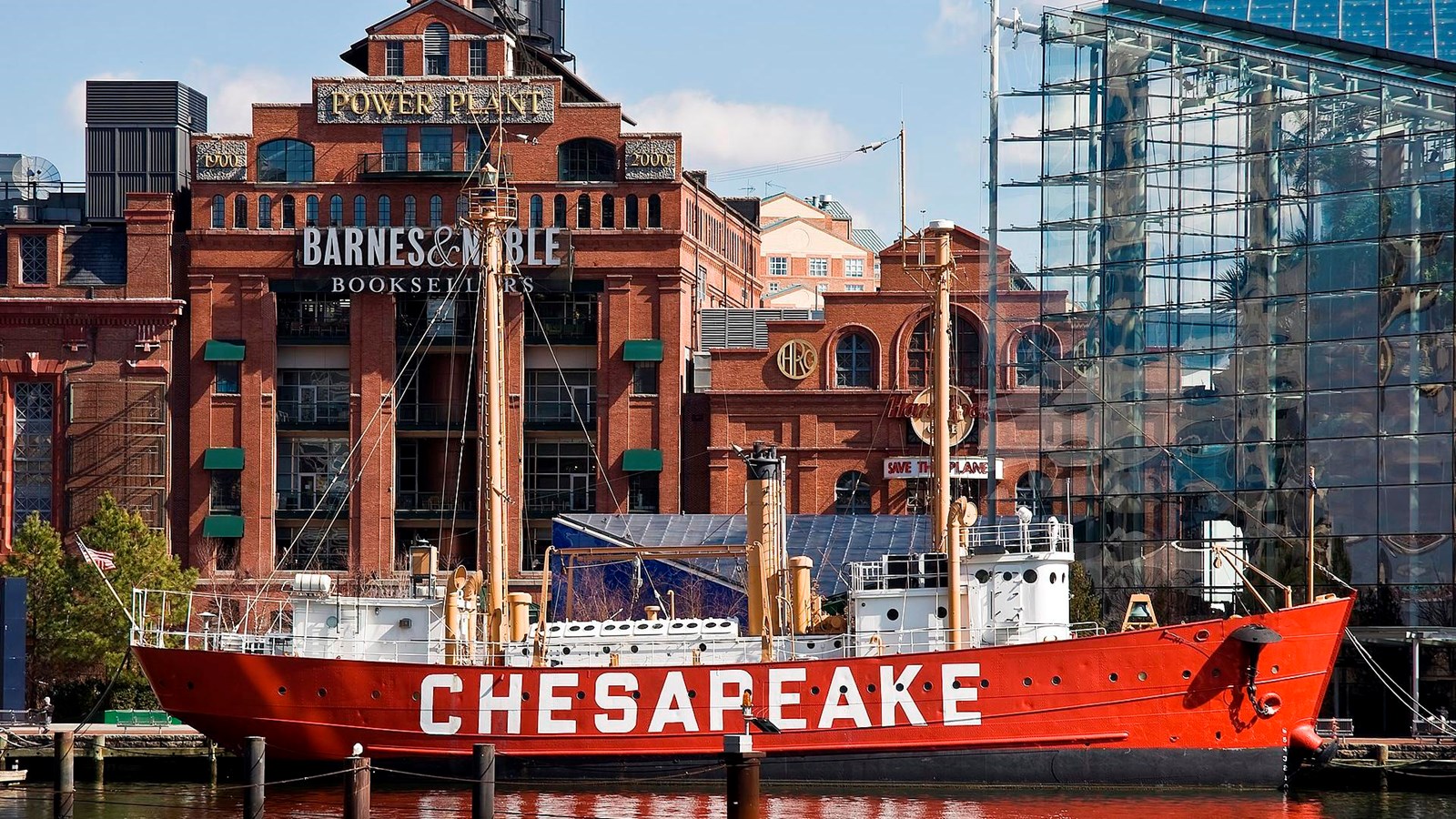Last updated: July 10, 2024
Place
The Lightship Chesapeake

Acroterion CC BY-SA 3.0, Wikimedia, 2012.
Lightship Chesapeake, also known as Lightship No. 116, served as a floating lighthouse guiding ships and boats through east coast waters from 1930 to 1971. It is the best-preserved example of the third generation of American lightships designed in 1929 and 1930 and powered by diesel-electric plants. These ships were the last lightships built by the U.S. Lighthouse Service (which became part of the U.S. Coast Guard in 1939). Today the National Park Service owns the ship, which is on long-term loan to Historic Ships in Baltimore, a non-profit maritime museum who operates it as a floating exhibit.
The Lightship Chesapeake was designated a National Historic Landmark in 1980 because it is an important surviving example of a type of vessel significant in United States transportation and commerce during the 1900s.
Naut like other Ships
A lightship is a floating lighthouse, designed for use in coastal waters where a fixed beacon cannot easily be placed. The idea of a lightship can be traced back to Ancient Rome, but the first documented lightship dates to 1731 in England. In the United States, the first lightship was placed off the Virginia coast in 1820. Four more were constructed and placed in the Chesapeake Bay the following year. The number of lightships produced by the United States peaked in 1909 at 56 total ships. This small fleet of U.S. lightships filled an important role in the nation’s history of transportation and commerce.
A Life of Service
Lightship Chesapeake was built in 1929 and designated Lightship No. 116. Exemplifying the best lightship technology of its time, the Chesapeake was in service for forty years. It is a steel-hulled vessel that measures 133 feet 3 inches long and 30 feet at its widest point. The Chesapeake has a high bow and freeboard as well as the rounded stern characteristic of lightships. Over the course of its career, Chesapeake was stationed in multiple locations.
For the first three years of its service, Chesapeake was stationed off of Fenwick Island, Delaware. In 1933 the vessel’s duty station was moved to the mouth of the Chesapeake Bay, where it was given its name, “Chesapeake.”. The ship was absorbed into the U.S. Naval Service during WWII and was stationed in Sandwich, MA until 1945 when it was restationed in the Chesapeake Bay. The Chesapeake’s final duty station was at the entrance of the Delaware Bay—aiding the safe passage and travel of other vessels until it was retired in 1971.
The National Park Service acquired the Chesapeake in August 1971 after it was decommissioned and replaced by an automated Large Navigational Buoy (LNB). NPS refurbished the vessel as a historical exhibit and as a vehicle for maritime environmental education, and it was stationed in the Washington Channel of the Potomac River off East Potomac Park in Washington, D.C. In 1980, the Lightship Chesapeake was designated a National Historic Landmark because of its important role in the history of American transportation and commerce during the 1900s.
The Chesapeake Today: Anchored in Education
On May 27, 1981, the National Park Service loaned the Chesapeake to the city of Baltimore where it began operating as a floating museum. The Chesapeake is an outstanding example of a historic U.S. Lightship, of which few remain. Today (2024), the Lightship Chesapeake is part of the Historic Ships in Baltimore collection and continues to serve visitors as a floating exhibit highlighting the history of American aids to navigation.
Sources:
Lightship No. 116 Chesapeake National NHL Nomination
National Historic Landmarks (NHLs) are historic places that possess exceptional value in commemorating or illustrating the history of the United States. The National Park Service’s National Historic Landmarks Program oversees the designation of such sites. There are just over 2,500 National Historic Landmarks. All NHLs are also listed in the National Register of Historic Places.
